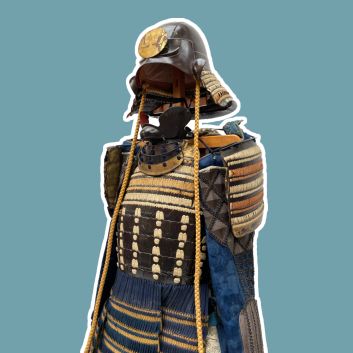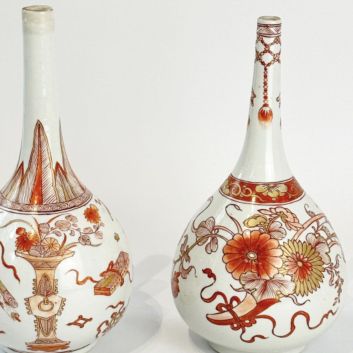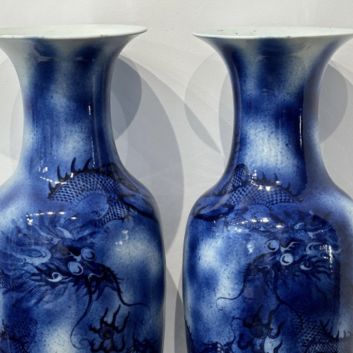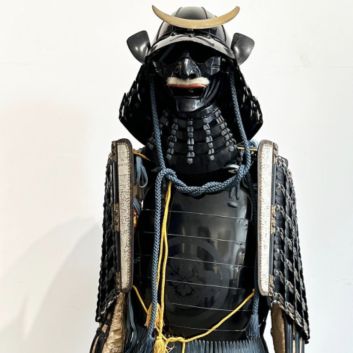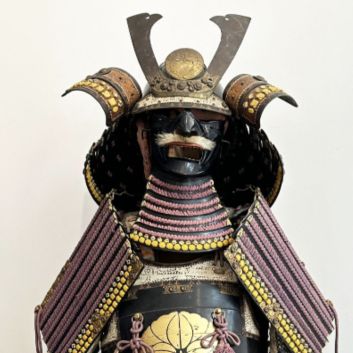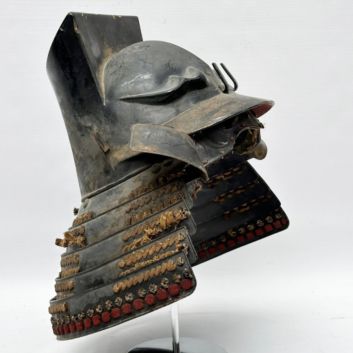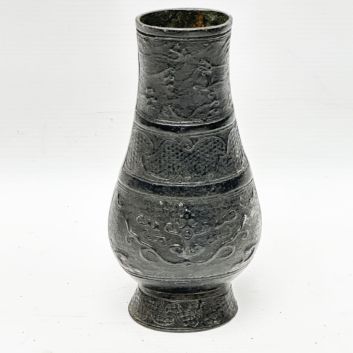Rating and value of Japanese screens
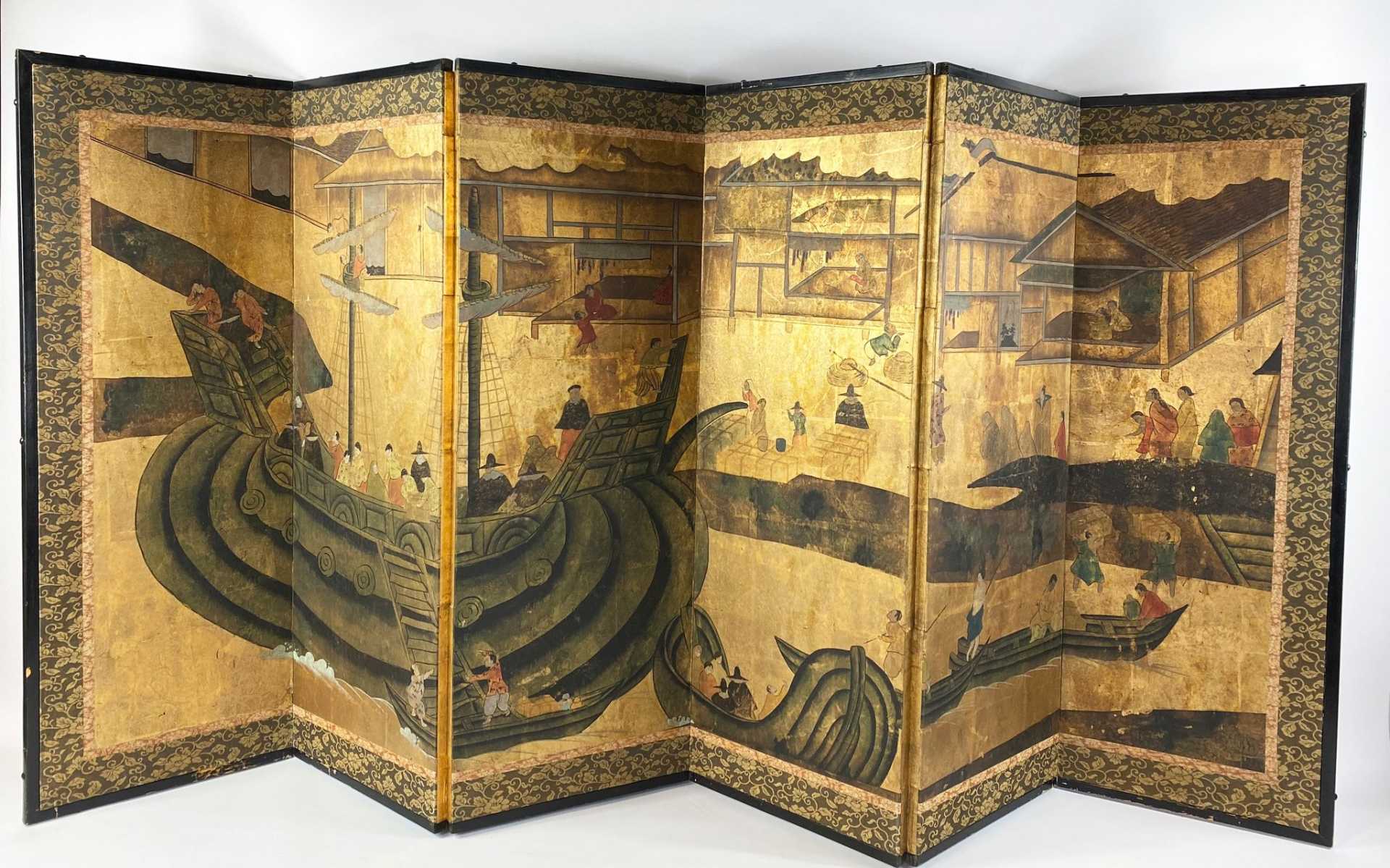
If you own a Japanese folding screen and would like to know its value, our state-approved experts and auctioneers can offer you their expert appraisal services. Our specialists will carry out a free appraisal of your work, and provide you with a precise estimate of its value on today's market.
Then, if you want to sell your work, we'll point you in the right direction to get the best possible price for it.
Rating and value of Japanese screens
Japanese screens are very popular at auction, whatever the period. Today, prices for these works are reaching unprecedented heights under the auctioneer's hammer.
They are particularly prized by Japanese buyers. The price at which they sell on the art market ranges from €110 to €15,000, a considerable delta but one that speaks volumes about the value that can be attributed to Japanese screens.
In 2018, a Kano School-style folding screen depicting the Kyoto Imperial Palace sold for €10,140.
Order of value from a simple work to the most prestigious
Draft shield type | Results |
|---|---|
Yamato-e folding screen | From €320 to €2,600 |
Kanō School folding screen | From €150 to €10,140 |
Rimpa School folding screen | From €110 to €15,000 |
Namban folding screen | From €400 to €4,200 |
Response in less than 24h
Japanese screen style and technique
Japanese folding screen techniques have undergone a remarkable evolution, particularly over the centuries, with each era refining the codes of decorative art.
In the most striking examples, the motifs seem to merge with the object itself, and the traditional structure of the screen becomes almost invisible.
The outline of the elements disappears, but the hatching remains, seeking every possible combination to express a spatial idea.
The lines, sometimes thin, sometimes thick, run freely through the space, delimiting zones of density and openness, which work together to create the light and shadow effects typical of traditional woodcut.
In screens, as in Japanese graphic art, the mastery of space, the absence of excess, and the quest for harmony between elements create a visual experience in which the object becomes a playground for the technique itself.
As in certain works of the Rimpa school, the variation in textures and reliefs is not content with representing natural elements or idealized scenes, but seeks to sublimate the materiality of the object.
In this way, the folding screen ceases to fulfil its purely utilitarian function and becomes a window onto a sensory and pictorial universe, where emptiness takes as important a place as fullness, in the manner of a continually renewed space.
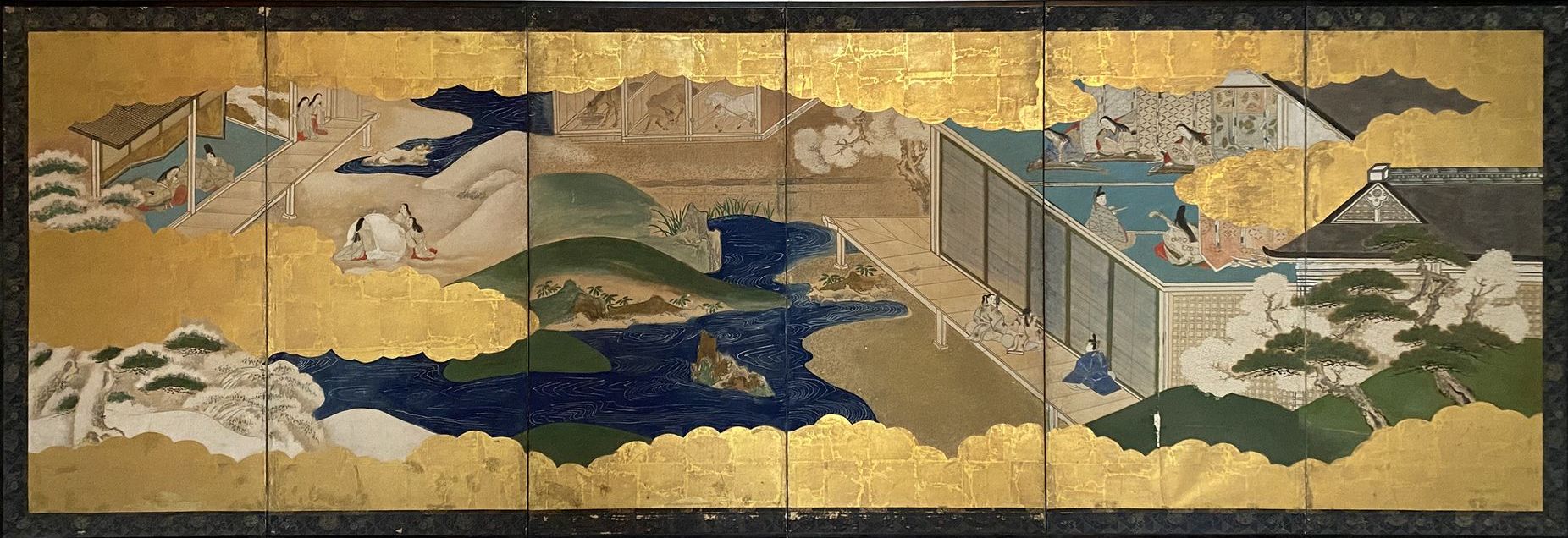
Focus on the Les Grues screen from the Edo period
The Japanese folding screen, in its very essence, defies the classic conventions of the genre.
His decor, initially uncluttered, seems to play with the limits of figuration, gradually erasing contours to leave only bursts of shapes that, instead of defining themselves precisely, brush against each other in fluid, almost unfinished arabesques.
The birds, etched in suspended movement, blend into a space that is neither entirely real nor entirely abstract, where natural elements merge in a ballet of nuances and textures.
The absence of marked reliefs and reinforced volumes gives way to a light, almost intangible atmosphere.
In this universe, the golden hues of the background mingle with the almost evanescent forms of the birds, which seem to escape the boundaries of the screen, as if to emphasize the idea that art cannot be contained by material limits.
The treatment of space, like a chiaroscuro engraving, varies between dense and almost non-existent zones, as if the eye were invited to navigate from one area to another, following the curves of light and shadow, without ever really settling on a fixed form.
The eye is thus lost in a series of impressions, light traces which, while remaining recognizable, escape the rigor of realistic representation.
The folding screen is no longer a simple decorative object, but a quest for the invisible, a space where nature unfolds in a constant dialogue between visibility and absence.

Features and styles
Japanese screens are characterized by their minimalist design and artistic refinement.
They are generally made up of several panels linked together by hinges, allowing them to be folded and unfolded to adjust their position and size to suit requirements.
There are several styles of Japanese screens, each reflecting a specific period and aesthetic:
1. Yamato-e: Yamato-e screens depict scenes of Japanese daily life, natural landscapes and historical or mythological figures. The colors are often vivid and the details meticulous.
2. Kanō School: This style emerged in the 16th century and is characterized by more elaborate paintings featuring battle scenes, animals and landscapes. Kanō screens are renowned for their great realism and use of color.
3. Rimpa School: This style emerged in the 17th century and focuses on elegant compositions with floral motifs and stylized landscapes. Rimpa screens are renowned for their visual harmony and subtle use of gold.
4. Namban: These screens, created in the 16th century, illustrate encounters between the Japanese and Europeans. They show exotic scenes of boats, strangers and unknown animals.
The success of screens on the art market
The success of Japanese screens on the art market is largely due to their uniqueness and the atmosphere they convey, along with a certain idea of escape and exoticism.
These pieces, with their refined design and decorative dimension, appeal not only to collectors but also to lovers of Japanese history and culture.
From the end of the 19th century and throughout the 20th, fascination with the Orient, amplified by the Universal Exhibition of 1867 and the opening of Japan to the West, fueled a quest for Japanese pieces, particularly screens, considered to be the emblem of ancestral know-how.
At this time, Art Nouveau, with its curves and natural motifs, resonated with the fluidity of Japanese designs, giving them a place of choice in the elegant interiors of European bourgeois and aristocrats.
The contemporary market for Japanese screens builds on this historical fascination, while at the same time responding to a search for rarity and quality.
While lacquer work, painting on silk and the use of gold leaf remain popular elements, it is the sophistication of the decoration that makes these objects so interesting.
The mix of stylized motifs, natural elements and legendary animals, often treated with avant-garde abstraction, catches the eye of those looking to treat themselves to an exceptional piece.
Moreover, the status of these screens as both works of art and utilitarian objects lends a special aura to each piece.
In terms of auction results, Japanese screens can fetch very high prices.
For example, a Meiji period folding screen, decorated with landscape scenes and animals, sold for over 200,000 euros at an auction in Paris in 2019.
Another folding screen, decorated with a sublime lotus motif in lacquer, exceeded $150,000 in New York, attracting particular attention from Western collectors eager to own a work of art paying tribute to the expertise of Japanese craftsmanship.
These results illustrate not only the quest for rare pieces, but also the role of these objects in the construction of a privileged aesthetic universe, where Orientalism, refinement and history combine to offer an investment that is both decorative and patrimonial.
The craze for these screens shows no signs of abating, driven by a growing demand for trans-disciplinary objets d'art, where orientality blends with a sophisticated Western aesthetic.
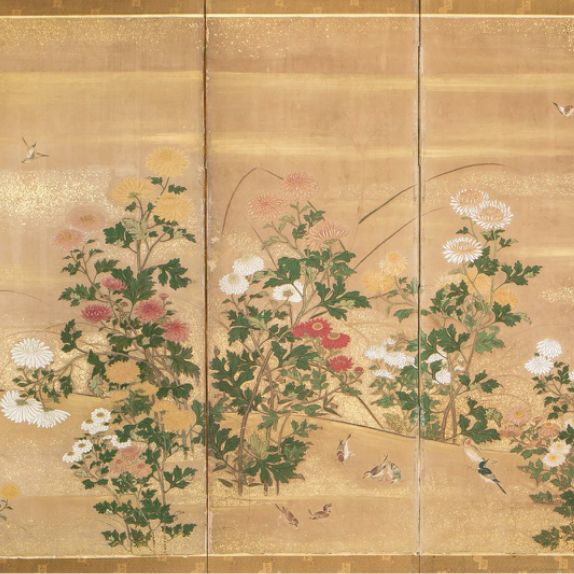
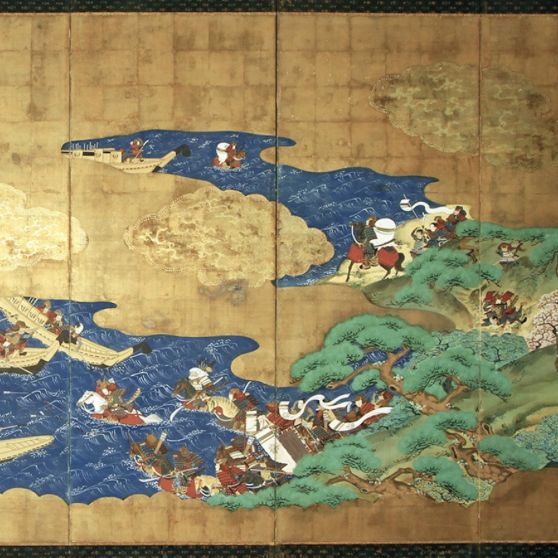
Their current value on the auction market
Although Japanese screens have ancient origins, they are still very popular in the contemporary world for their timeless aesthetic and their ability to separate different spaces.
Their ability to filter light while preserving privacy makes them particularly attractive for modern living spaces.
They are among the most sought-after Asian objets d'art, along with Chinese vasesvases Chinese jades and Chinese snuffboxes.
Dating your Japanese folding screen
Japanese screens often have a recognizable style, which makes it possible to date them. For example, if gilding is present on the screen, it dates either from the 17th century or later.
The state of conservation of your object and the study of pictorial techniques will be studied beforehand to determine the most precise date possible.
Response in less than 24h
Knowing the value of a work
If you happen to own a Japanese folding screen, or think that your item might be one, don't hesitate to request a free evaluation using the form on our website.
A member of our team of experts and certified auctioneers will contact you promptly to provide you with an estimate of the market value of your work, as well as any relevant information about it.
If you wish to sell your work of art, our specialists will also be on hand to help you sell it at the best possible price, taking into account market trends.
Related topics

The value of jades, China's imperial symbol
Jade, this semi-precious stone, is increasingly sought-after and popular, and can fetch surprising prices. Free jade appraisal
Read more >
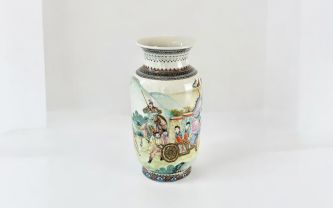
Free estimate of your antique Chinese vase
Interest in the ancient arts of China has continued to grow. Having your Asian art pieces appraised by an expert is key.
Read more >
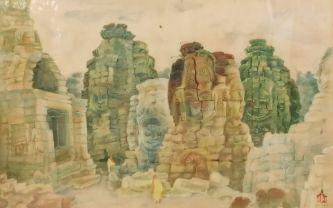
Rating and value of works, paintings by Thuong Lan Nguyen
Thuong Lan, a little-known Vietnamese artist, is nevertheless appreciated at auction. His works are very valuable. Estimated in less than 24h.
Read more >
Secure site, anonymity preserved
State-approved auctioneer and expert
Free, certified estimates
